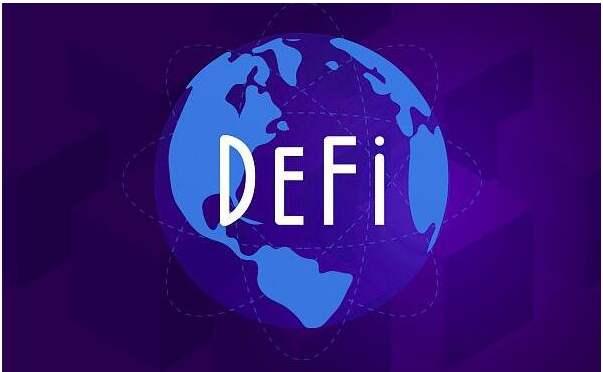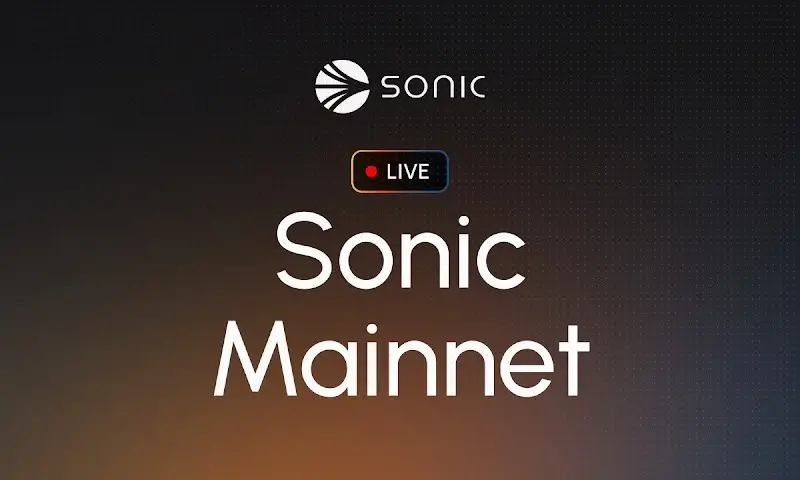A Comprehensive Understanding of the Recently Surging Public Chain Project Fantom Network
This article is sourced from Deep Chain Finance.
Since February 2021, the price of ETH has been continuously rising, surpassing the $2000 mark at its peak. The already high Gas fees have left Ethereum developers in despair.
At the same time, Yearn founder Andre Cronje has repeatedly mentioned Fantom, a public chain from South Korea, on Twitter, and called on developers to try DeFi development on Fantom.

LinkedIn profiles show that Andre served as the chairman of the technical committee at Fantom for about six months and still acts as a technical advisor for Fantom. We also found Andre's presence on the Fantom official website, and in The Erica Show on October 1, 2020, Andre stated that he is still working daily with the Fantom team.


From the moment Ethereum was born, public chains claiming to be "Ethereum killers" have not been able to truly impact Ethereum's historical position in the cryptocurrency field. More and more public chains are choosing to embrace Ethereum and become good friends with it.
As one of the early DeFi developers and supporters of Ethereum, why does Yearn founder Andre Cronje have such high hopes for Fantom? Below, we will unveil the mystery of Fantom.
As we all know, established public chains have always faced a dilemma: the more nodes there are, the higher the degree of decentralization, but the speed and scalability become worse. However, the technology used by Fantom, called DAG, is exactly the opposite; simply put, the more nodes that join, the faster the speed, and scalability becomes virtually limitless.
In fact, star public chains like EOS and TRX have also tried to solve the blockchain trilemma, which weighs speed, security, and decentralization. However, the actual results have been disappointing. For example, the so-called million TPS of EOS was only a few thousand in real tests, and its security was poor, making it the most talked-about but worst-performing public chain in the market. Many new public chains have been trying to solve this problem, such as the finance-focused Avalanche protocol and the open network NEAR.
So, what is DAG?
A New Type of Smart Contract Platform Based on DAG
Fantom is a smart contract platform based on DAG, addressing the scalability and confirmation time issues of existing blockchain technology. Fantom is a highly scalable DAG project that supports smart contracts, fast transactions, and almost zero transaction fees.
Directed Acyclic Graph (DAG) is a commonly used data structure in computer science. Structurally, it is a distributed architecture. In graph theory, if a directed graph cannot return to a certain vertex after traversing several edges, then this graph is a directed acyclic graph. Because a point in a directed graph may reach another point through two different routes without necessarily forming a cycle, a directed acyclic graph does not have to convert into a tree, but any directed tree is a directed acyclic graph.

DAG does not have the concept of blocks; instead of packaging all data into blocks, each user can submit data units (including transactions, consumption, etc.), and multiple users can submit data simultaneously. This means that the writing operation of data units is asynchronous and linked together through the reference relationships between data units (nodes confirm directly with each other).
The Fantom project has made numerous technical innovations in an attempt to solve the blockchain trilemma.
First, Fantom adopts a new protocol called the "Lachesis Protocol" to maintain consensus. This protocol will be integrated into the Fantom OPERA chain. Its purpose is to allow a batch of programs to be built on top of the Fantom OPERA chain, enabling all users to enjoy near-zero cost instant transactions.
The OPERA chain, as a new type of distributed infrastructure, aims to solve the scalability issues of existing blockchains by rapidly processing blocks on a large scale. At the same time, the OPERA chain attempts to process transaction information and "StoryData" in real-time within a distributed environment.
The OPERA chain consists of three layers: the Core Layer, responsible for large-scale transaction processing; the OPERA Ware Layer, responsible for supporting smart contracts and other functions; and the OPERA Application Layer, which provides support for third-party applications.
Secondly, the Lachesis Consensus Algorithm (LCA) aims to enhance performance and security using DAG-based distributed ledger technology. It can not only prevent attacks caused by specific node failures but also achieve extremely high transaction throughput.
LCA will specifically form the "Lachesis DAG" based on the Lachesis protocol. A series of links between event blocks form a DAG, which, as a distributed system, can store immutable data. Event blocks include the following information: transactions, smart contracts, historical information, and the value of previous transactions.
Furthermore, in terms of virtual machines, the Fantom virtual machine aims to significantly reduce capacity and improve processing speed. The register-based virtual machine can reduce the execution cost of OPCODE by more than 50% and nearly double the performance capacity.
Compared to other projects, Fantom's innovation also lies in its intention to enhance the security of signatures and data transmission between nodes using a highly secure Elliptic Curve Cryptography (ECC) technology.
The advantages of elliptic curve encryption lie in its ability to ensure high security with shorter key lengths and allow for high-speed calculations during signing. The ECC employs the most efficient algorithms to solve the discrete logarithm problem, making it easy to design a secure cryptographic system.
This cryptographic system is more efficient because, for the same level of security, its key length is shorter than that of other encryption systems. Additionally, Fantom plans to increase support for software and hardware wallets using ECC technology and enhance the security of these wallets.
FTM Token
The total issuance of the FTM token is 3.17 billion. As of now, the circulating supply is about 2.5 billion, with a total market value exceeding $2 billion. One important value capture function of FTM is staking: staking FTM to become a validator node to earn income, which is very similar to the common PoS consensus mechanism.

According to Fantom network data, there are currently 36 validator nodes, over 14,000 addresses, and about 54% of FTM is staked, amounting to over 1.37 billion tokens.
Fantom's Exploration in the DeFi Field
On May 7, 2020, Fantom announced the launch of Fantom.Finance, the first DeFi platform initiated with the aBFT consensus mechanism. Most common DeFi projects are based on the Ethereum network, while this project is based on the Fantom platform.

Fantom's aBFT consensus mechanism has several advantages:
1. Near-instant confirmation
2. High throughput
3. High security
For DeFi projects, these features are the most basic requirements. Fantom.Finance will provide on-chain trading, lending, staking, and other services while ensuring security and speed. More importantly, users will not experience any delays or congestion on the platform.
Currently, Fantom.Finance has three basic products: fMint, fSwap, fLend.
fMint, stablecoin minting. Users can mint synthetic assets fTokens by locking FTM tokens through fMint.
fSwap, decentralized exchange. fSwap supports trading of up to 176 synthetic assets, which will be protected on-chain through the proof-of-stake consensus of the Opera network. fSwap has advantages such as good depth, fast confirmation speed, and zero slippage.
fLend, lending. Users can engage in lending through fLend, with different assets forming a liquidity pool, and the lending rates automatically adjust based on market conditions, similar to Compound.
Recently, Fantom announced a partnership with Coinbase Custody, followed by collaborations with decentralized oracle ChainLink, decentralized exchange Sushiswap, cross-chain protocol Ren Protocol, and Web 3.0 indexing protocol The Graph. We can see Fantom's ambition to vigorously develop its DeFi ecosystem.
Yearn founder Andre is also actively testing a new product for cross-chain atomic swaps through Fantom's compatibility with Ethereum's EVM features. Cross-chain asset trading is also one of the upcoming explosive tracks.

Currently, various projects including the working network Keep3rV1, insurance protocol Cover Protocol, lending protocol Cream.Finance, derivatives protocol Frax, decentralized exchange Sushiswap, and more Ethereum DeFi protocols have announced plans to migrate to Fantom for further development, to create a cross-chain ecosystem.
On February 25, quantitative company Alameda Research invested $35 million in the Fantom Foundation. Alameda Research will collaborate with the Fantom core team to integrate cross-chain products such as Solana, Serum, and Raydium. In addition, Alameda Research will run a validator node on the Fantom Opera mainnet to help enhance network security.
As of now, the FTM token has surpassed $0.8, increasing nearly 15 times in just one month and nearly 100 times in nine months. In the current environment of high Ethereum Gas fees and slow progress on Layer 2 solutions, Fantom has successfully gained market recognition through innovative mechanisms.
However, the current DeFi projects on the Fantom platform are slightly more difficult to get started with compared to general projects, and the liquidity mining returns do not have a significant advantage. Whether the locked amount can continue to grow and the influx of developers remains uncertain, and we will continue to monitor this low-profile "killer."










